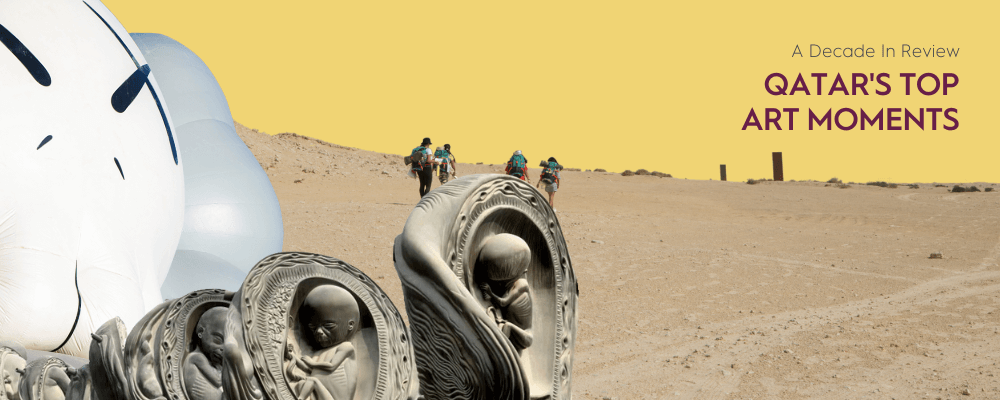A Decade in Review: Qatar’s Top Art Moments
The past decade has been a renaissance of art and culture for Qatar as it cements its role as a cultural hub, both within the region and internationally. Qatar’s largest city, Doha, is quickly becoming the Middle East’s artistic focal point. Qatar Museums, like the American Smithsonian system, hosts and exhibits an astonishing collection of Western and Eastern art that often rivals those hosted by their contemporary counterparts in the West. In addition to being home to a multitude of organizations and museums, Doha also boasts a stunning collection of public art that dots the city.
The following is a selection of 10 artistic developments that highlight the city’s transformation, and Qatar generally, as it strives to become the Middle East’s cultural capital.
Public Art Installations
Qatar’s public art scene features noteworthy pieces from regional and internationally acclaimed artists that are placed throughout the country. Artists such as Damien Hirst, Richard Serra, Subodh Gupta, eL Seed, and Sabah Arbilli have created works of art that stir conversation and provide perspective on humanity’s nature and the human condition. The debut of American artist Richard Serra’s ”East-West/West-East” in 2014 created a stunning array of monoliths that accentuate the surrounding Qatari desert’s beauty, providing a unique perspective on the position of humanity within the landscape.
Similarly, British artist Damien Hirst’s “The Human Journey” consists of 14 gigantic bronze sculptures that chart the gestation of a human being from conception to birth, ending with a statue of a 46-foot-tall anatomically correct baby boy. Unveiled in 2013, the installation is situated on the road leading to Qatar’s leading hospital and medical research center, Sidra Medical Research Center.
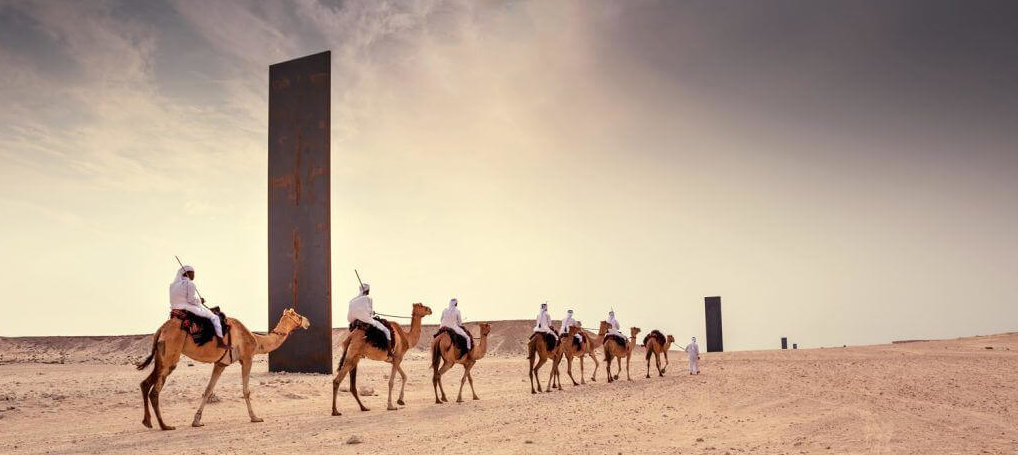
Richard Serra’s ”East-West/West-East”
Katara
The creation of Katara Cultural Village highlights Qatar’s overarching vision to incorporate the arts and globalization into the very essence of its national identity. Launched in 2010, Katara Village is a stunning show of architecture, modernity, and global unity. The village serves as a hub for the artistic community, housing public art exhibitions, and being home to a diverse array of cultural organizations, art galleries, and international cuisine.
Each part of Katara was constructed to possess its own unique architectural spirit that was inspired by cultures and styles from around the world. A perfect example is the Katara Masjid (mosque) that was designed by world-renowned Turkish architect Zainab Fadil Oglu. Additionally, the village hosts a large amphitheater equipped to host live performances and plays. The goal behind this mini-city was “to firmly establish Qatar on the global map as a place where the people of the world come together to experience unique offerings in culture, sports, business, and family entertainment.”
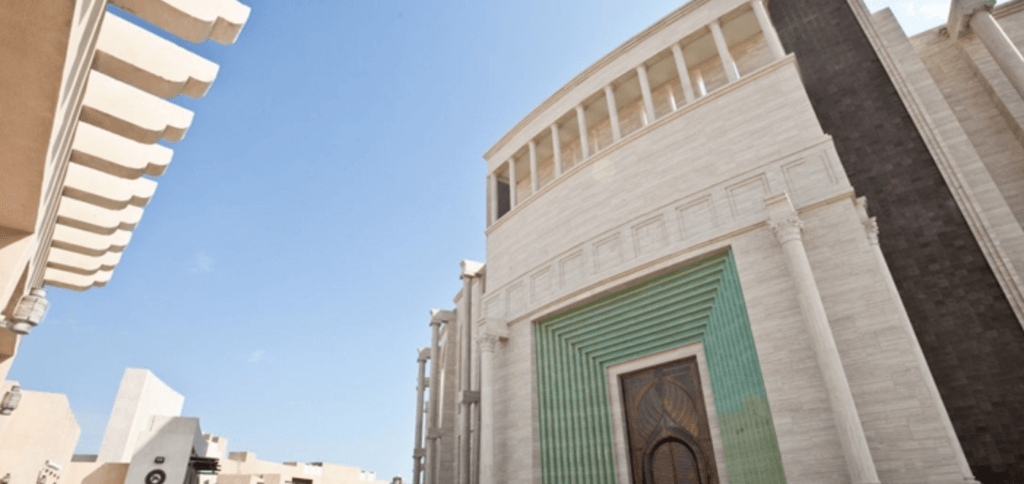
A snapshot of Katara Cultural Village
Qatar Foundation
Education is a crucial element of any society, as it is the mechanism by which the next generation of that society is prepared to meet the challenges of an ever-changing world. Qatar Foundation is an organization with a mandate to equip Qatar’s next generation of artists, scientists, and humanitarians. Qatar Foundation has paved the way for establishing art and culture as the backbone of modern-day Qatari society.
The foundation has been the driving force behind the Qatar Philharmonic Orchestra, the Qatar National Library, Mathaf: Arab Museum of Modern Art, Al Shaqab Equestrian Center, and Education City, which hosts some of the world’s most prominent academic institutions including Georgetown University, Virginia Commonwealth University, and Northwestern University.
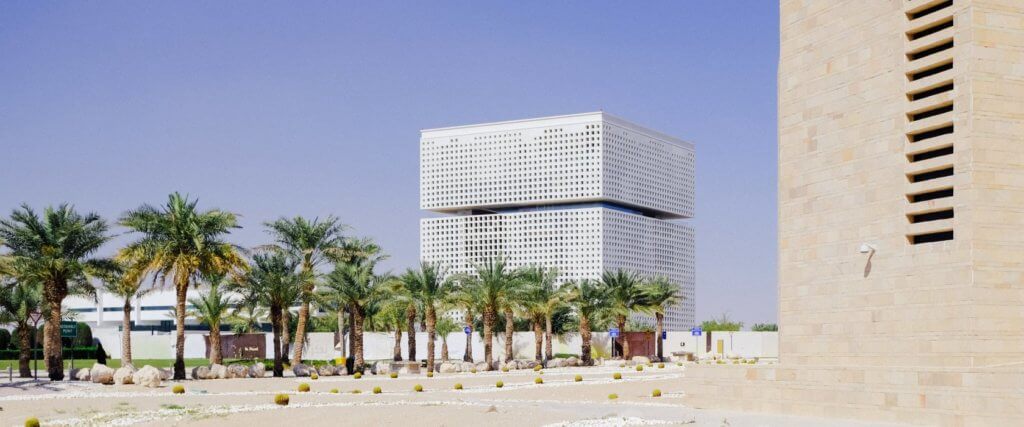
Qatar Foundation Headquarters in Education City, Qatar
Doha Film Institute
After its founding in 2010, the Doha Film Institute (DFI) initially served as a forum to engage the global film community through a partnership with Tribeca Enterprises, hosting four editions of the Doha Tribeca Film Festival. The organization has also produced internationally acclaimed cinema with features such as, “Just Like A Woman,” “The Reluctant Fundamentalist,” and Kanye West’s “Cruel Summer – A Short Film.”
However, with a growing local and regional demand, the institute quickly shifted from the global to the local and serves as a home to regional filmmakers and storytellers, providing the expertise and funding to produce local, regional, and international films empowering the next generation of filmmakers. The organization also provides forums for workshops and labs, where budding filmmakers are exposed to various creative skills and approaches.
However, with a growing local and regional demand, the institute quickly shifted from the global to the local and serves as a home to regional filmmakers and storytellers, providing the expertise and funding to produce local, regional, and international films empowering the next generation of filmmakers. The organization also provides forums for workshops and labs, where budding filmmakers are exposed to various creative skills and approaches.
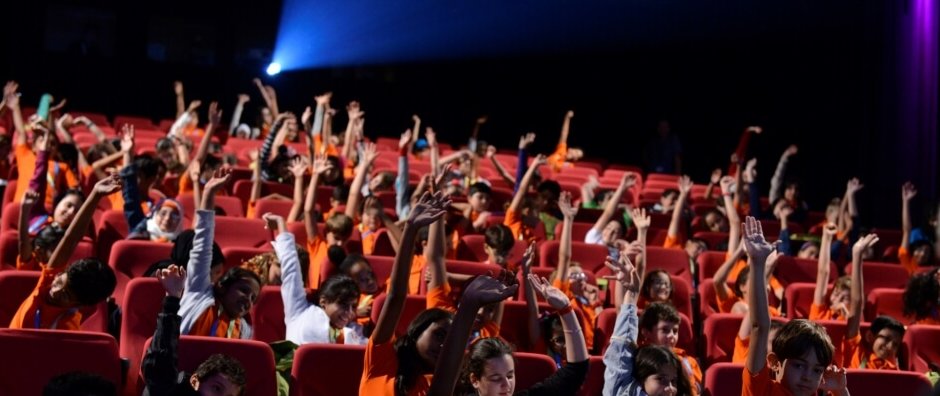
Children participating in DFI’s Ajyal Film Festival
Museum of Islamic Art
The Museum of Islamic Art, a masterpiece in architecture crafted by the late American-Chinese architect I.M. Pei, hosts one of the world’s largest Islamic art collections from Indonesia to the Iberian Peninsula. The museum boasts an exquisite array of art and history. It serves as a cultural landmark for the greater Middle East.
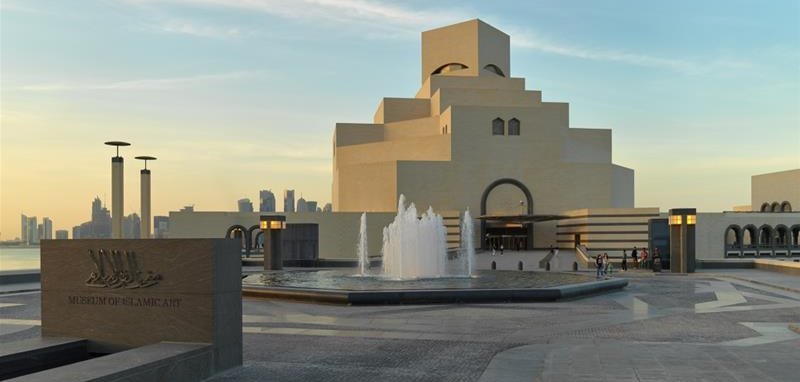
The Museum of Islamic Art
Msheireb’s Bin Jelmood House
The Bin Jelmood House in Doha is one of the first museums in the Arab world to highlight both historical and modern-day slavery, both globally and within the context of the Arab world. T In a nod to history, the museum is located within the very walls that were used to house many enslaved laborers. The directors at the helm of the museum want to examine both Qatar’s and the region’s history in the slave trade, as well as provide insight into the evolution of the slave trade and how it has manifested in various forms throughout history.
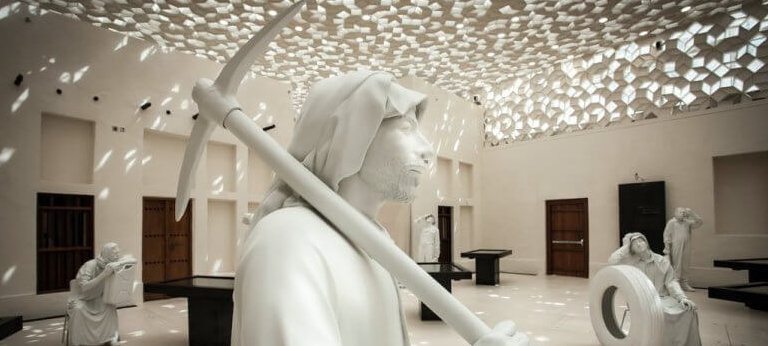
Inside the Bin Jelmood House
Doha Fire Station
From fighting fires to kindling the next generation of artists, the Doha Fire Station is an incubator for artists. The Fire Station serves as a contemporary art space committed to supporting artists through a 9-month residency program and is also host to a vibrant event space that features a number of exhibitions and public programs. The original Fire Station was built in 1982 to serve the local community, housing the local fire brigade until 2012. In 2012, Qatar Museums repurposed the building as a residency space for the artists of the upcoming generation.
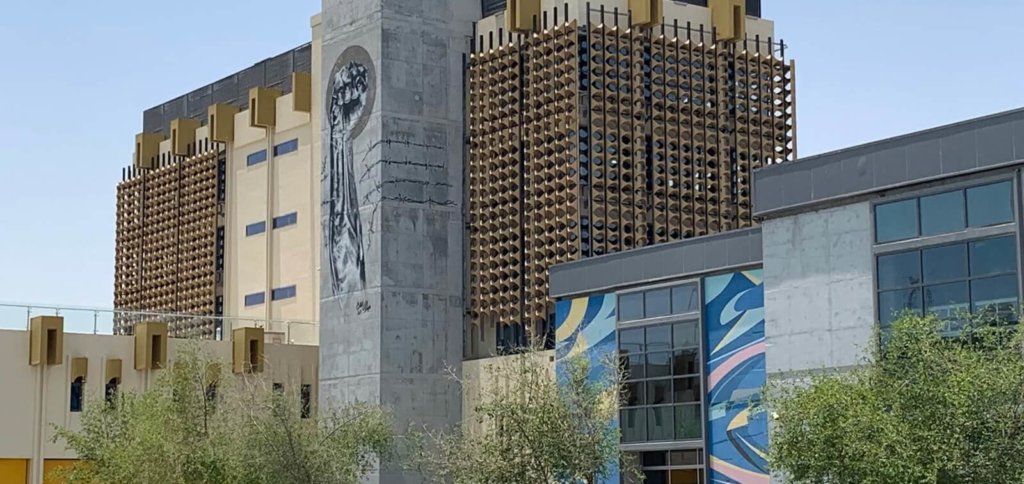
Doha Fire Station
KAWS’s Holiday in Doha
Brian Donnelly, also known as KAWS, debuted his first solo exhibition in the Middle East at the Doha Fire Station in 2019. The commissioned exhibition was curated by Qatar Museums and art historian Germano Celant. The exhibition was titled “HE EATS ALONE” and featured an iconic inflatable installation featuring a 40-meter-long inflatable sculpture titled “HOLIDAY” along Doha’s dhow harbor.
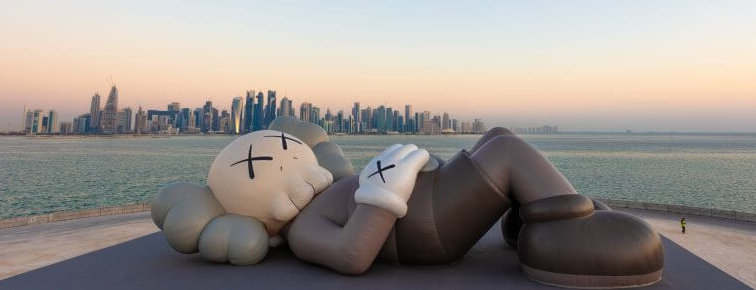
KAWS along the dhow harbor
Reopening of the National Museum of Qatar
An architectural gem and massive undertaking spanning from 2010 to 2019, French architect Jean Nouvel’s awe-inspiring redesign of the National Museum of Qatar stretches for nearly a mile, telling the natural and political history of modern-day Qatar through 11 galleries. The museum’s design was inspired by the desert rose mineral formation and its intersecting curved disks, which can be found throughout the building’s architecture.
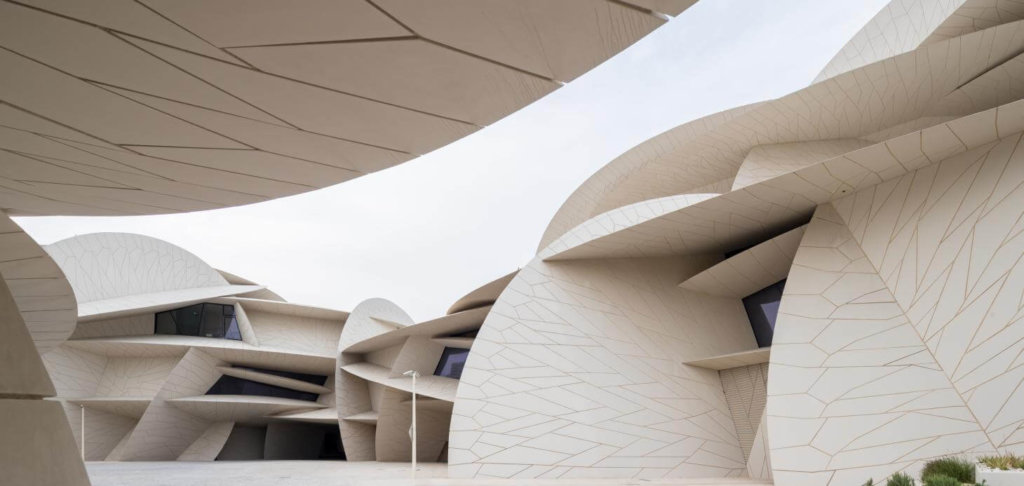
National Museum of Qatar
Years of Culture Program
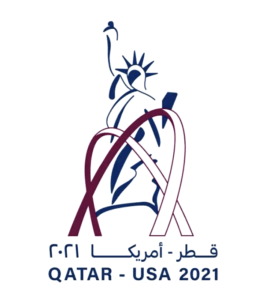
the official logo of the Qatar-US 2021 Year of Culture
The Years of Culture program is an initiative led by Qatar Museums (QM) in which unique cultural exchange programs convey Qatar to members of the international community and vice versa. A series of exhibitions, festivals, and events are held between Qatar and the nation chosen for any particular year. H.E. Sheikha Al Mayassa, Chairperson of QM stated
“Culture goes beyond the arts, it’s a measure of lifestyle that extends to all areas of life. We celebrate culture, sports, business, education, music, and much more.”
The Year of Culture Program kicked off in 2012 with partner country Japan. Since then, it has partnered with countries such as Russia, India, China, the United Kingdom, and Turkey. QM recently announced that 2021 would be the Qatar-USA Year of Culture.

